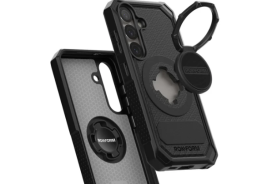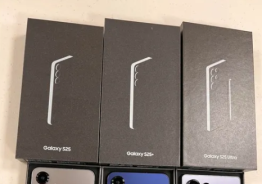The first smartphone running on Intel's Atom "Medfield" platform will launch later this week, Intel CEO Paul Otellini said.
Speaking to reporters and analysts during Intel's Q1 earnings call, Otellini outlined the company's goals for 2012, particularly in the mobile industry. Key points for this year include 100 new Ultrabook designs, as well as more devices powered by Intel's Ivy Bridge processors. "We expect to see another important milestone for our business later this week: the launch of the world's first Intel architecture based smartphone," Otellini said.
Back in January, at the Consumer Electronics Show (CES), Intel executives, together with Lenovo and Motorola Mobility, announced plans for this year to sell smartphones powered by Intel's Atom Z2460 "Medfield" platform. Intel made similar announcements at the Mobile World Congress in February, with ZTE and Orange.
Lava's Xolo X900
When it comes to the first Intel-powered smartphone slated for later this week, Otellini offered no further details on what the new phone will be. According to reports, however, the phone will come from mobile device maker Lava International, and will be available in India. IDG News quoted an unnamed source saying the phone will be Lava's Xolo X900. The phone will reportedly be powered by a single 1.6GHz Atom Z2460 chip. Intel and Lava initially announced the smartphone back in February, at the Mobile World Congress.
According to Intel, smartphones powered by the Z2460 chip can provide battery life of 14 hours in standby, up to eight hours of 3G voice calling, five hours of 3G browsing, or six hours of high-definition video. The Xolo X900 will run on Android, but it is not yet certain which version. It also features two cameras, NFC (near-field communication) capabilities and high-definition video capabilities. The retail price is yet to be revealed.
Intel made $2.7 billion in the first quarter of 2012, on revenues of $12.9 billion. During the same period last year, the chip maker made $3.12 billion on $12.85 billion in revenues. For more than a year, company officials have considered an aggressive push into the mobile computing space, aiming to challenge ARM's dominance in the smartphone and tablet markets.
More Ivy Bridge Chips
Over the next few months, Intel will roll out more 22-nanometer Ivy Bridge chips designed to power the next batch of Ultrabooks and make their way into tablets as well. According to the chip maker, the Atom Medfield chips will also make their way into some tablets and smartphones.
The Ivy Bridge chips are expected to deliver better performance and significantly better power efficiency, as well as greater graphics capabilities than the current "Sandy Bridge" chips. The first quad-core versions of Ivy Bridge chips are already shipping, mostly for desktops, and will be followed by versions for laptops and Ultrabooks. According to analysts, Ultrabooks are a good way for Intel to bolster a sluggish PC market while paving the way to the mobile computing space.
Intel, Unlikely to Overtake ARM
Back in January, ARM Holdings CEO Warren East told Reuters that Intel may get some design wins, however it does not have the capabilities to take over the smartphone and tablet markets. "It's inevitable Intel will get a few smartphone design wins," said East. "We regard Intel as a serious competitor. Are they ever going to be the leaders in power efficiency? No, of course not. But they have a lot more to offer."
Meanwhile, Mercury Research principal analyst Dean McCarron said Intel's smartphone launch is a definite sign of progress, but it is still questionable whether it can overtake rival ARM, whose processor designs are more power-efficient. "ARM has obviously had a multiyear head start. Will there be an overnight transition? Of course not," said McCarron, as cited by Computer World.
(reported by Alexandra Burlacu, edited by Surojit Chatterjee)
© Copyright 2025 Mobile & Apps, All rights reserved. Do not reproduce without permission.

















